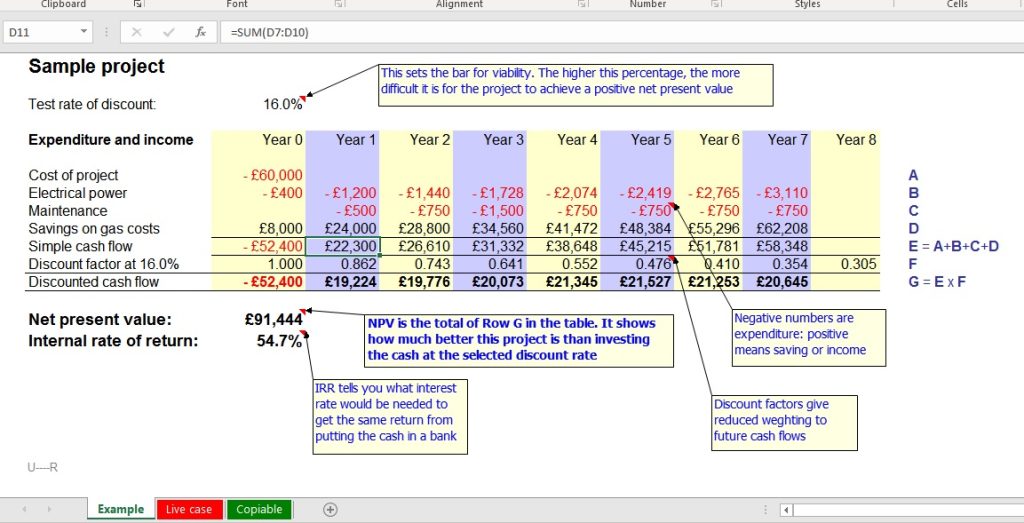HOW SHOULD energy-saving investment opportunities be evaluated? I recommend discounted cash-flow (DCF) rather than the commonplace, but somewhat crude, metric of simple payback period. DCF will give you two measures of a project’s value:
- Internal rate of return (IRR) is the rate of interest you’d need to get from investing your cash in something else, to make that the more profitable choice; and
- Net present value (NPV) shows you what lump sum today would equal the lifetime profit from the project, assuming that you place relatively less weight on future savings the further off they are.
To carry out a DCF calculation for an energy-saving project you start with year-by-year estimates of costs and savings. In the simplest model there is a single cost item in the first year and equal annual savings thereafter; but with some projects there will be costs in future years, or the savings may be predicted to vary in future. The screenshot below shows an annotated example in an Excel spreadsheet. It evaluates a heat-recovery system which, as well as an up-front investment cost, will incur annual electricity costs and maintenance charges (all outgoings being shown in red):
The IRR in this example is 54.7%.
The NPV depends on what you choose as a ‘test rate of discount’. In theory this would be the interest you pay on borrowings, although in practice it is often set a lot higher as a hedge against perceived risk. The example above uses 16% and you can see in row F the discount factors that result. In Year 3 the factor is 0.641, meaning that the savings of £31,332 expected that year are only worth £20,073 in today’s terms. In aggregate the NPV is £91,444. That’s how much better off you would be than the option of doing nothing.
Note that with a lower test rate of discount, the discount factors in row F increase, which raises the net present value.
A DCF workbook is available to download here. It includes the annotated example shown above, a live calculation that you can use for experimentation and familiarisation, and an unlocked version which you can copy and adapt.
